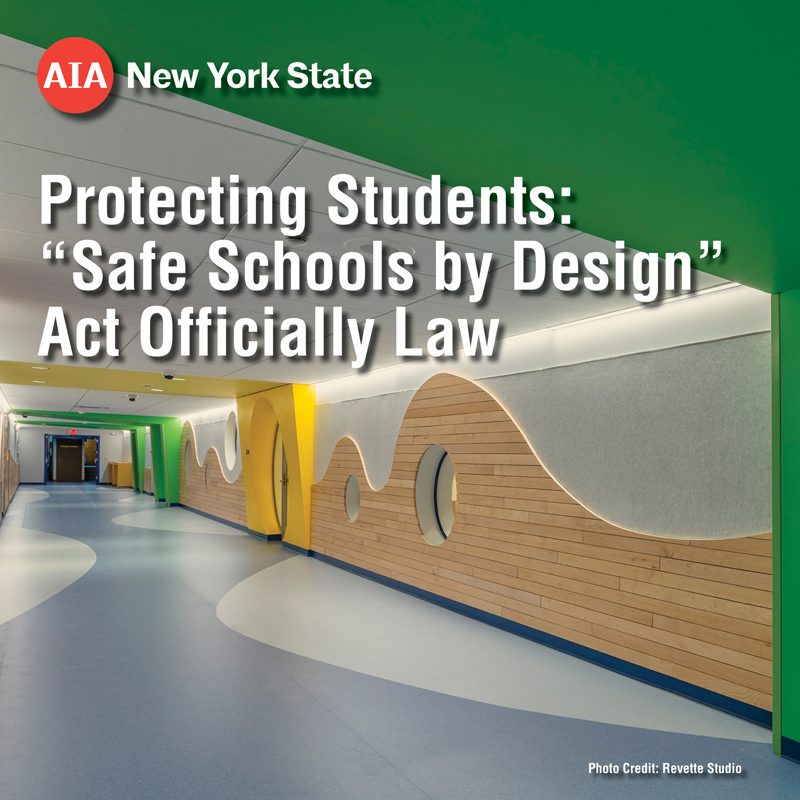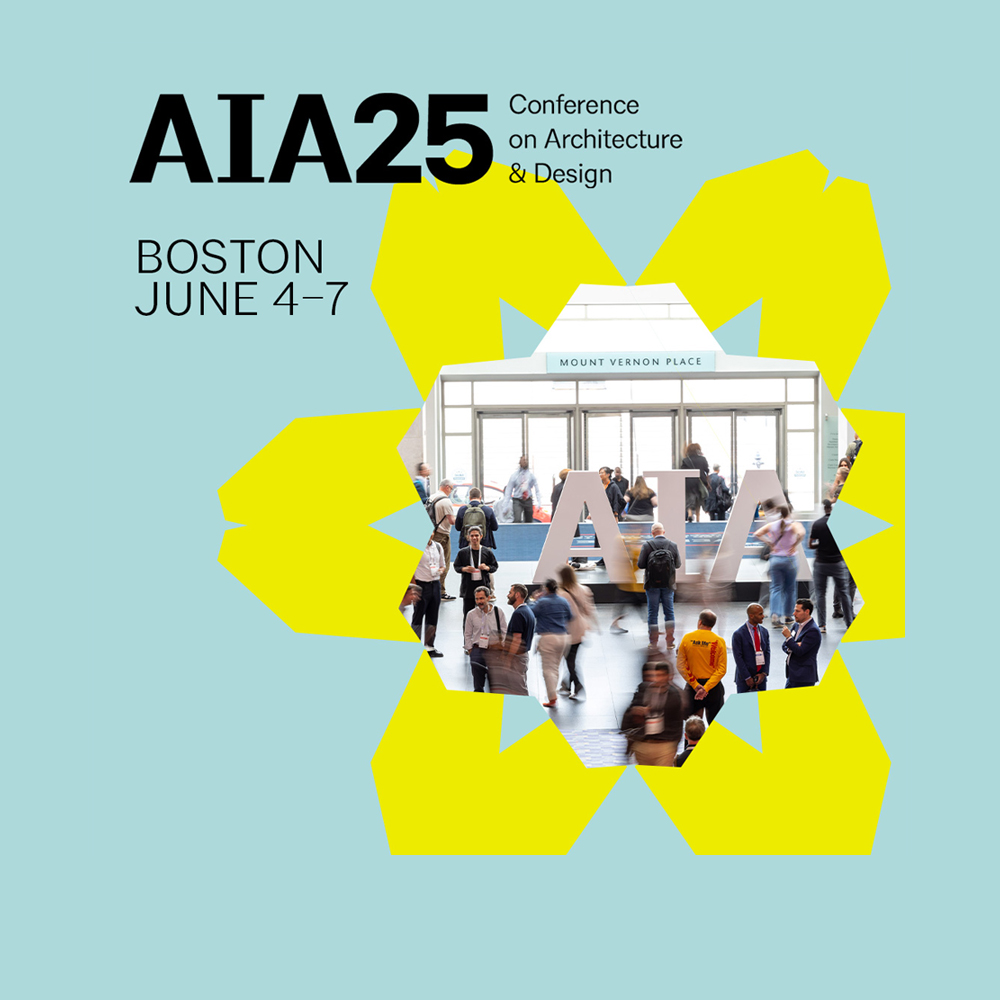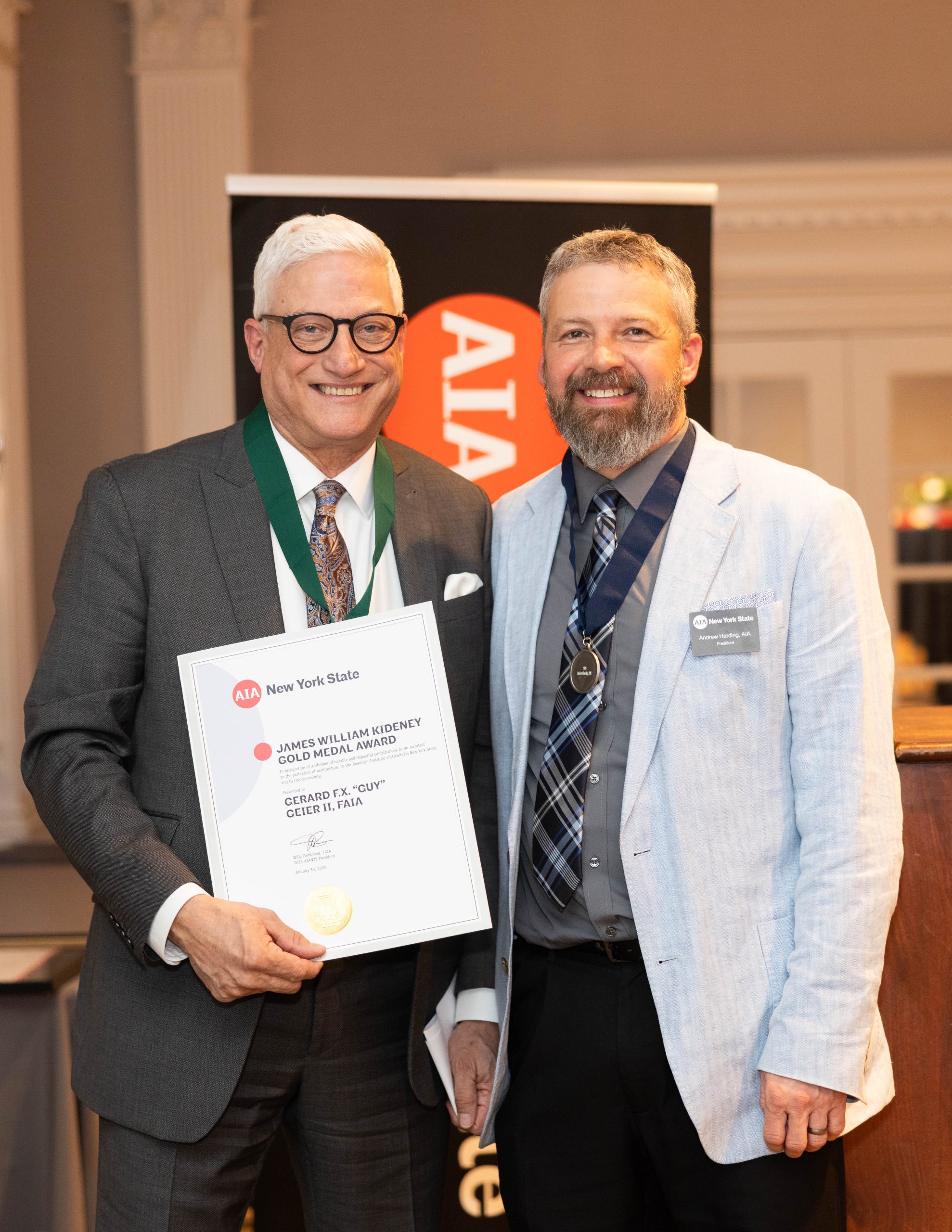From advocacy to award-winning projects, our members are shaping the future of the profession and practice of architecture. Explore the latest AIA New York State news now!
-

Northeast Excellence: Celebrating Our 2025 College of Fellows Inductees, Award Winners, and Volunteers During AIA25
-

Protecting Students: “Safe School by Design Act” Officially Law
-

Kelly Hayes McAlonie, FAIA, honored with the 2025 AIA Award for Excellence in Public Architecture
-

Building Bridges, Not Just Buildings: AIANYS and AGC NYS Honored with 2024 ESSAE Professional Development Award
-

AIA25: The Premier Event for Architectural Professionals
-

AIA New York State Announces 2025 Officers and Board of Directors
-

AIA New York State Celebrates Architects Driving Change in the Profession with 2024 Honor Awards
